When it comes to protecting your house against occasional power failures, particularly ones you cannot predict, properties such as a home generator come in very handy. Yet the most significant question lies in the hearts of many homeowners: How much does it cost to install a home generator? The amount of money you spend on purchase, charge for installation, as well as maintenance tips, cannot be foretold as it is contingent upon various factors. This article, containing this particular interest, is presented to you to help you see what the total home generator cost is about and how to select one based on the advanced knowledge about the subject and the budget. Regardless of whether you are considering a small emergency generator or a fully integrated power system for your home, this article will help you understand how to manage and allocate your financial resources.
Understanding Home Generators
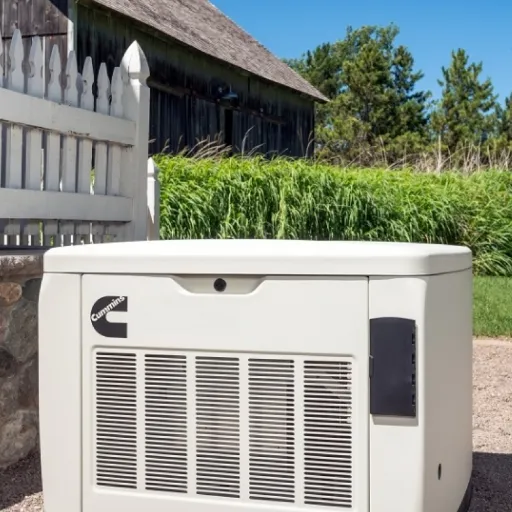
The home generator is a system specifically designed to provide electric power in situations where there is a power outage. Therefore, it is a system that produces electricity from the fuels present inside it, such as petrol, propane, or natural gas, so that it may be utilized to run certain basic household appliances. The two main types of home generators are:
- Portable Generators – In other words, a temporary power supply. Such a power generator is relatively mobile and usually capable of providing power supply to some specific household appliances during short-term power outages. Their installation and functional use also require some manual action. There must be no irrationality at all when assembling the device and attaching it to the household or any equipment.
- Standby Generators – Generators that are not removable and are operational whenever utility power fails. They are also able to serve an entire house, if required, by being connected to the household power distribution board and interfacing with other devices through the use of supply cables, connections, and piping systems.
The selection of a generator suitable for use in a particular household is primarily reliant on the number of watts a specific home needs, the financial limit, and sometimes whether the community experiences power disruptions, which can be caused by local challenges.
Types of Home Generators
| Type | Power Output | Fuel Source | Activation | Ideal For | Cost Range |
|---|---|---|---|---|---|
| Portable Generators | 2-10 kW | Gasoline/Diesel | Manual | Temporary, small-scale power needs | $500-$2,000 |
| Standby Generators | 7-50+ kW | Natural Gas/Propane/Diesel | Automatic | Whole-house, long-term outages | $5,000-$15,000+ |
| Inverter Generators | 1-7 kW | Gasoline | Manual | Sensitive electronics, RVs, camping | $300-$2,500 |
| Solar Generators | 0.5-2 kW | Solar | Manual/Automatic | Eco-friendly, low energy needs | $1,000-$5,000 |
| Dual-Fuel Generators | 2-10 kW | Gasoline/Propane | Manual | Versatility, emergency situations | $700-$3,000 |
| Whole-House Generators | 48-56 kW | Natural Gas/Propane | Automatic | Large homes, essential appliances | $10,000-$20,000+ |
Portable vs. Standby Generators
| Feature | Portable Generators | Standby Generators |
|---|---|---|
| Power Output Range | 1-10 kW | 5-60+ kW |
| Fuel Types | Gasoline, Propane, Solar | Natural Gas, Propane |
| Installation | Plug-and-play, No Setup | Requires Professional Setup |
| Portability | Easy to Move | Fixed in Place |
| Runtime | Limited by Fuel Capacity | Continuous with Fuel Supply |
| Usage Scenarios | Camping, RVs, Small Loads | Large Homes, Whole-House Use |
| Noise Levels | Moderate to High | Low, Quieter Operation |
| Cost Range | $300-$3,000 | $5,000-$20,000+ |
| Maintenance | Lower Frequency, Simple | Requires Regular Service |
| Automation | Manual Start Mostly | Fully Automatic Operations |
Inverter Generators Explained
An inverter generator is a highly advanced device designed to produce clean, spotlessly powerful energy for sensitive electronics and other devices. Inverter technology enhances reverse actuating circuits and others with a quick and cost-effective method to produce AC, which is then converted to DC and then back to AC using an inverter. This particular factor helps in smoothening the maximum value of power and eliminates the phase angle effect in the sine wave. This is because it is a power supply in the form of a sine wave inherently, and it is more top-heavy than horizontal equipment.
Perhaps one of the most significant advantages of inverter generators is their fuel efficiency. For many models, there is an ‘eco mode’ or ‘variable speed technology’ that helps to level the engine speed and its power output. The net effect of this is lower fuel usage, and also less noise is produced as the engine operates exactly as required. Another benefit of inverter-type generators is that they are typically designed to be lightweight and compact, making them easier to transport and store.
Despite the numerous advantages they offer, it is clear that they still have a long way to go in terms of portability, ease of use, and power delivery when compared to a standard generator. Such generators are in most cases effectively used for self-contained retail and while camping. In view of the inconveniences that often accompany a simple power outage, which are mostly beyond control, many homeowners prefer using these generators as a form of backup for their heating and lighting systems whenever there is a power cut. However, the present market offerings have the capacity for sale and this limitation is likely to change because of advancements in technology harnessing the advantages of inverters.
Generator Costs Overview
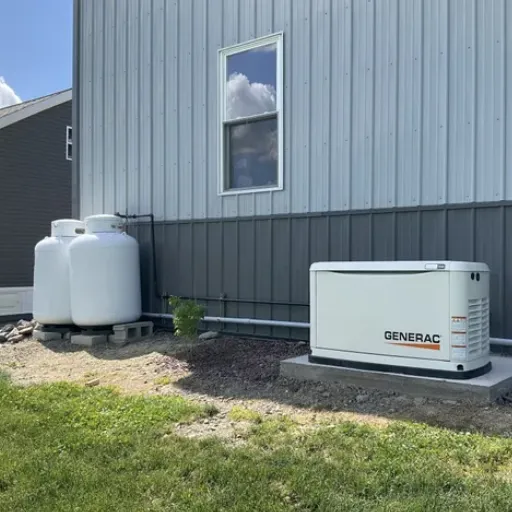
The cost of a generator can vary significantly based on the type of generator, its size, and any additional features it may have. Portable generators can range in price from under $400 to more than $1,000, except for some of the most expensive models. Inverter generators, also popular for producing minimal noise and efficiently using gas, typically fall within the $1,000 to $1,500 price range on average. However, when it comes to standby generators, which are designed to provide complete home or office backup power, there is no doubt that they are on the higher end of the price spectrum, with prices generally ranging from less than $2,000 to $10,000 or more, excluding installation costs. Expectedly, the cost of the generator is also influenced by factors such as the fuel it uses, its power, and the brand. It is helpful to assess your electricity needs to purchase the correct system.
Average Cost of Home Generators
Determining the expected costs associated with home power systems involves comparing the upfront costs with the future expenses that may arise. Thanks to changes and modifications due to its wattage, fuel, and other features, an average portable generator will cost between $300 and $1,500, which is an affordable price for short-term use, as is the case with a portable one. However, permanent or ‘Emergency’ Standby generators start from $2,500, and the price escalates to as much as $15,000 for those with high energy capacities to cater to big homes or large business operations. Even with these cost cuts, other expenses, such as professional setup, the purchase of the switch, and regular maintenance, will require an additional $2000 to $5000. At the same time, consumers planning to buy should take into account how much power might be needed, what kind of fuel must be used and how the system should be designed for safety purposes.
Price Ranges for Different Models
Generators, being highly useful to populations that are mobile or suffering from power outages in any way, come in a wide range of models that cater to the needs of different consumers. As a result, this variation in models causes differences in prices due to power output, fuel type, and other additional features. The investment in small portable generators generally reduces as prices trend between $500 and $3,000 for generators that do not exceed 7000 watts. The generator models are considered practical on a few occasions of the interrupted power supply, such as during storms or cold nights. Typically, such generators, ranging from 8000 to 20000 watts, are directly connected to a load, primarily in residential and light commercial areas, with costs ranging from approximately $3000 to $10000. High-capacity devices, those exceeding 20,000 watts, typically sell for prices ranging from $ 12,000 to $ 20,000. In this category, the pricing further depends on rectification features like automatic transfer switch, fuel efficiency, and however monitoring system. Readers should then consider the total life cost of any exhibited generator, including capital cost, energy or fuel consumption, and the cost of other operations, to avoid making an undesirable selection for their power needs.
Cost Factors Influencing Generator Prices
Power Output and Capacity
The parameter that primarily determines the price of a generator is its specified or rated maximum output power measured in kilowatts (kW). However, residential generators usually come in smaller sizes, i.e., with outputs between 5kW and 20kW, compared to industrial ones, which tend to be much bigger and have output ratings over 100kW. Larger machines, by any means, are very costly since they have a higher rating, which requires more sophisticated technical assistance and special materials, thereby increasing the cost.
Fuel Type and Efficiency
Additionally, the type of fuel a generator uses can significantly impact the cost. The generators that run on engines fueled by diesel fuel are, in most cases, considered one of the most energy-effective and durable engines, though the costs upfront are higher. Gasoline-powered generators, on the other hand, are more environmentally friendly and must be fixed in place, but have been found to be very expensive to install due to the need for gas lines. Additionally, models considered fuel-efficient typically lower the cost of operations; however, on the other hand, the equipment has an expectation of a higher purchase cost due to the sophistication of the technology used.
Build Quality and Durability
More durable generators, which are built using sturdy materials to ensure that they operate for a longer period without experiencing any issues, perform better and last longer, and are costlier. However, some conditions will cause any mechanical device made of metal to rust; hence, such features are incorporated at a price.
Advanced Features and Technology
Available information suggests that even the most affordable generators on the market today incorporate several advanced technologies. For example, standby or emergency generators do not interrupt power flow to the critical load, which is important in specific applications, such as hospitals. In addition, many newer models can be accessed over the internet or an intranet, increasing usage and associated costs for the customer. This also includes advanced silencing techniques, emission reductions, and a method for extending the generator’s capacity through blocks.
Compliance with Environmental Standards
The applicability of the above regulations is incorporated in the price of the generator, especially in providing such measures for those units that are built to comply with stringent government control, both in urban and environmentally fragile zones. To maintain emission levels, the generator also receives additional equipment, such as a catalytic converter and an appropriate silencer system, which suppresses the sound output as well.
Installation and Maintenance Costs
Installation complexity and ongoing maintenance are significant contributors to the total cost of ownership. Such installation flows as those involving external fuel tanks or expensive ventilation units result in enhanced costs compared to designs that do not. Additionally, the cost of long-term maintenance to prevent maintenance emergencies should also be factored into any pricing calculations.
Installation Expenses
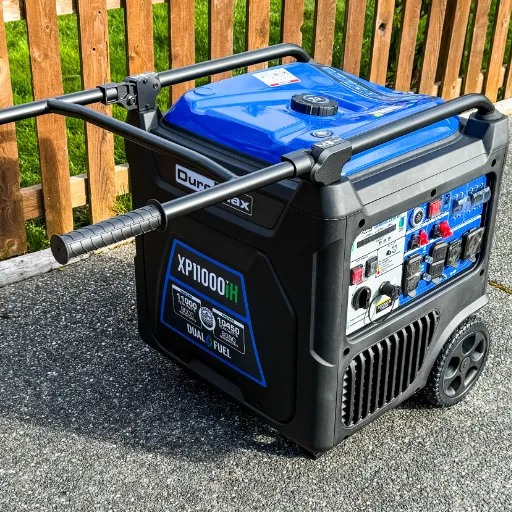
The costs of installation, as a norm, incorporate such kinds of expenditures as the price of devices, labor, and also the level of infrastructure modifications necessary. These rates differ from one situation to the next, depending on the complexity of the equipment. It’s worth noting that the systems that have other aspects such as teipwps, like exhaust airing or fuel tanking, involving added expenditure. Installation charges include the level of skill required, the hours of work, and the travel time of the person involved in the process. To do it cheaply, one must enlist the assistance of professionals who specialize in this work and consider the various factors involved before integrating it into the existing infrastructure.
Labor Costs for Generator Installation
The labor for installing a generator, in particular, is quite fluid. It is also contingent upon several aspects, such as the complexity of the project, the generator being utilized, and the labor costs in a particular region. For instance, the average wage for setting up an electrical generator at a residence ranges from $50 to $200 per hour, and the entire installation time is typically 6-10 hours for a standard application. More complex applications that also require extensive wiring or connection to a compressor, such as those involving natural gas, may necessitate the assistance of skilled professionals, which further increases labor costs.
In addition to affecting the amount of wages to be paid to workers, the geographic location may also affect the readiness to pay the professionals. The pre-install preparation may include obtaining necessary documents and ensuring that the area for the system’s upcoming setup is adequately prepared. To make sure the costs are reasonable, every householder or rural dweller can ask several electricians to give free service charges at their place, or rather, all the services rendered, including the electrical wiring, programming of the new controller, and assurances of prompt response in case of any complaints, will be invoiced within another.
Permits and Additional Fees
To comply with local norms and regulations, all power or technology-dependent projects must obtain a license to operate electrical or technical systems. It is tough to determine the exact cost of permits as mandated by the state, but some states have a minimum of $50, and the cost can range from a few hundred dollars to several thousand dollars for more advanced permits. In addition, some communities may require requests for inspections before and after the works, which may result in additional payments. There are additional charges that will be incurred beyond the permit fee. To mention a few, there are the costs of site preparation and equipment transportation, as well as the use of other tools that may be labor-intensive. Knowing what will come about later will greatly influence the regulations by facilitating the budget process and even promoting speed in services.
Modifications to Electrical Systems
When planning to make changes to an electrical system, it is essential to follow specific safety codes and regulations. Maintenance of safety standards helps ensure the work is done correctly and minimizes potential harm. The changes can also involve basic improvements, such as increasing the load capacity, replacing outdated cables, or implementing new technologies, including smart home designs and renewable energy. Another option is to upgrade the main service entrance of the houses or buildings from, say, a 100-amp to a 200-amp service to meet the higher demands, such as large households or homes equipped with EV chargers and high-consumption appliances.
Professional electricians utilize sophisticated equipment with diagnostic capabilities to assess system performance, particularly ground integrity, and identify potential volumetric or hazardous factors that could cause adverse effects. Moreover, regarding the possible loss caused by voltage spikes, other protective measures are employed, such as whole-house treated suppressors and balanced conditions.
Due to the increasing environmental consciousness and the need to maximize the effectiveness of energy use, the plans may include the accommodation of implementing solar (PV) systems, further even energy storage, and energy conservation measures. In case of such modifications, the statutory requirements regarding under-grid installations, provision of approvals and necessary permissions have to be adhered to while understanding the technicalities and constraints of the utility provider.
Financing Your Generator Installation
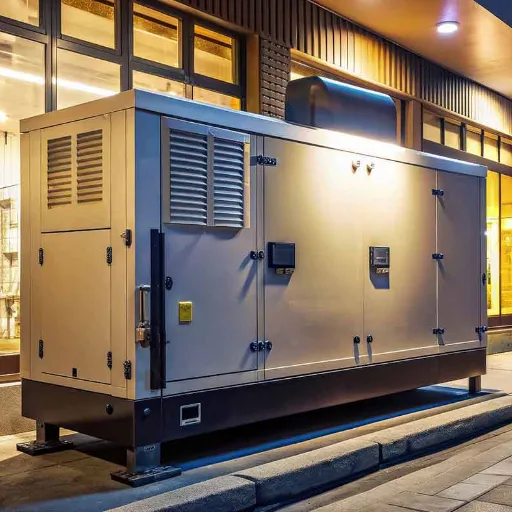
Unavoidable and critical in all these factors is the simple fact that such a project, like many other alternative power generation schemes, requires one to use some finite amount of money as the construction capital cost. It is therefore conceivable that an investor who does not possess the necessary financial capability is deterred from investing in such a power plant. Typically, in such cheaper setups, many shareholders would prefer to possess a higher percentage of shareholding, while in more expensive ones, they would be content with even a lower percentage. One of such is deferring construction in return for more equity with the rationale that the expansion of operations would quickly lead to capital appreciation. Exactly that, and the factors that have impinged upon growth in the sales revenues in Table 2, would dictate how soon such an emergence of retained earnings would actually take place.
Cost of Installing a Whole Home Generator: Budgeting Tips
The cost of setting up an entire house generator can be very steep though, and that is why it is essential that the installer, as well as the homeowner, accounts for several variable costs in order to avoid any unforeseen expenditures. The largest of these is the cost of the generator, which can vary from $2,000 to as much as $8,000 depending on the generator’s size, fuel type, and manufacturer. In addition, setting up the generator is known to require a significant amount of additional expenditure, which should be factored into the cost of labour, permits, power system alterations, and land levelling.
Hidden expenses may entail paying for a favourable relocation switch worth roughly $500 to $2000. This is vital for uninterrupted power distribution in the home in cases of emergency power outages. In reality, some households with intricate electrical systems or sites with particular requirements may incur slightly higher costs than the previously estimated hidden costs. In the long term budget plan, this kind of generator calls for regular maintenance, as well as fuel storage and fuel replenishment.
Home Generator Worth: Is It a Good Investment?
Purchasing a home backup generator allows for an assessment of both financial and practical aspects. As far as statistics are concerned, the United States experiences power cuts on a regular basis due to the advanced age of the existing grid system and the escalating frequency and intensity of extreme weather conditions. Indeed, related research indicates every year, the average individual loses about eight hours of electric power, although for specific areas, the figure is significantly more pronounced. All these unwanted conditions could lead to the loss of food, the breakdown of electrical systems, and the potential damage to delicate electronic gadgets and other home systems.
From an economic perspective, installing a generator set on the customer’s land can increase the property’s valuation. Research affirms that houses that are fitted with appropriate power backup systems, do command higher selling prices on disposal especially in locations prone to blackouts. Furthermore, the ability to provide uninterrupted power for the property offers additional security for the purchaser, especially in the event of emergencies, given the growing demand for convenience.
Modern household generators boast a range of improvements in terms of functionality and efficiency. Among these features are intelligible load balancing, automatic off-grid management, quieter performance, and other aspects of home generators that are advanced. With these features, silent home living becomes a reality because there will be a constant power supply without stressing out the generators. Running almost exclusively on natural gas or fuel is one of the main reasons why most old diesel generators can be considered as a less expensive and greener alternative to gas-powered power plants.
While deciding on whether one should buy a generator or not, one needs to check specific issues which include the amount of money that is going to be spent in purchasing and installing the generator, operational expenses upon purchase and whether they can be maintained as well as the availability of quality backup support over the longer period of time. One must be aware that each household has individual constraints. Still, in many cases, consumers do not regard the above-specified expense for investing in electricity at the installation site as worthwhile.
Choosing the Right Generators
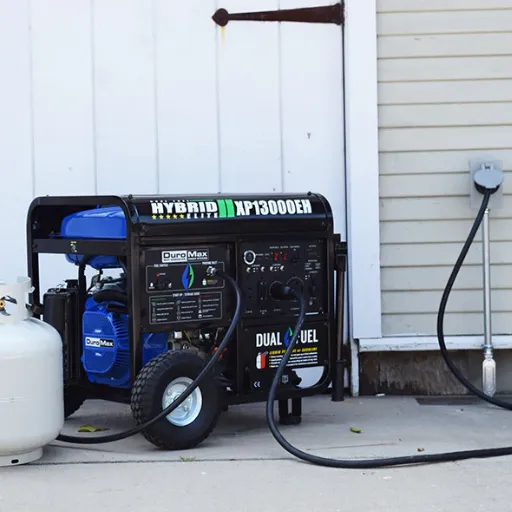
Making the right choice of generator to install at your home will involve a discussion of three key elements: power capacity, type of fuel, and the amount of resources you want to allocate to the exercise.
- Power Capacity – To begin with, determine the amount of energy needed for the devices and services of the home that you wish to operate in case of an electric failure. It will help you give an estimate of the required watts so that the generator does not go off under pressure.
- Fuel Type – It is crucial to select a fuel that is readily available and convenient in your locality. Commonly used fuels are gasoline, propane, diesel, or natural gas all of which have characteristics such as how to store them and the cost of buying them.
- Budget – Contemplate the costs you will incur to purchase the generator and pay for its installation, including the fuel and ongoing maintenance. It is, however, imperative that you do not compromise quality over the cost to avoid shocks such as malfunctions and downtimes, particularly when working with a generator.
An understanding of these elements is key to the efficient and effective determination and, consequently, the acquisition of a suitable generator for supplying power without power interruption at home.
Assessing Power Needs
Before making a purchase, you must first ascertain the necessary power rating for appliances in the home. Therefore, type in “how much power to run meaning of publishing” in the web and follow the scientific Process explained below. On the other hand we understand that due to the shortage of time, you may still require some more help. Many patients with the condition are turned away simply because their treatment is too expensive. Other times, women don’t want to stop treatment that may help them while other things. For instance, it can emerge from the device’s handover to the system area, most commonly through soft handover, which can be caused by factors such as impulse.
Considering that it may not be feasible to plug in numerous one-pole apparatus, it will be a technical imperative. Enough data is available to suggest that a typical family may need between 5,000 and 7,500 W of emergency load, depending on the number of essential appliances, to generate power demand as well as supply. In any case of generator purchase, there must be sufficient capacity to manage all load peaks, ensuring stable operation. Make sure that enough power is provided for possible developments or additional appliance purchases (.e.g., cooling double door fridge) so as to ensure the stability and growth in due course.
Setting a Budget for Your Generator
Calculating the impact on your wallet when buying any type of generator requires factoring in some essential considerations before making a decision. The price of a residential standby generator can range from $500 for a portable model which can serve even the smallest functional purpose, to above $10,000 for a standby whole-house generator, without any concerns of installation. As such, portable systems are generally more affordable but may not have the capacity to run an entire home, and thus stand for short periods of time or rather for purposes that do not extend to all-round use. Conversely, the permanently attached generator comes on in seconds and uses all the appliances in the entire property, particularly information-active innovative technologies, but the price of this equipment is relatively high, and installation needs to be carried out by an expert.
Added to the list of expenses are the likes of fuel types and the corresponding energy consumption. For instance, diesel generators are generally more costly to purchase initially, yet unlike most petrol-powered generators, they consume less fuel and are also more reliable. On the other hand, natural gas and LP gas counterparts are marketed as low-emission units, although they operate more loosely. Apart from the delivery terms, we also have maintenance costs. With a generator featuring many advanced systems or an automatic transfer switch, you may incur additional maintenance costs, but this will provide better service. With these inputs, together with the specific need for power, budget targets should also be delineated to ensure stringent and satisfactory end-use objectives.
Reference Sources
-
Cummins: Whole House Generator Costs
- Key Findings: The cost of a home generator installation depends on factors like generator size, automatic transfer switch (ATS), professional installation, and fuel type. Generators start at $4,000 for 13kW models, with installation costs ranging from $2,000 to $4,000.
-
Home Depot: Generator Installation Cost Guide
- Key Findings: Installation costs for home generators range from $5,000 to $12,500, depending on unit size and complexity. The guide highlights the importance of permits, site preparation, and professional labor. It also discusses financing options and the value of bundled maintenance plans.
Frequently Asked Questions (FAQs)
Q: What is the average cost of installing a whole home generator?
A: The overall cost of installing an emergency power generator in your home can vary between $5,000 and $15,000 on average, depending on several factors, including the size of the unit and additional installation work required. The cost of installing this unit is based in part on the type of electrical work that needs to be done and will depend on whether you are installing a natural gas generator or a propane generator. On the other hand, it is worth noting that a larger home standby generator, designed to power the entire house, will tend to be more expensive. Other than the cost of a whole home generator, there may be additional costs for permits and inspections, which increase the total installation cost.
Q: What factors influence the cost of a whole-home generator?
A: A number of inherent spending considerations play a role in the cost of a complete house generator. The most prevalent among them are the number of watts the generator offers, nature of fuel used in the generator and the onset of the installation stage. For example, a more steady generator able to run all gadgets in the house, will be a bit costly as opposed to a smaller size of the same kind. Similarly, the option between a gas-powered generator and a countertop is another thing that brings up the cost implications. Also, the extent of the process, such as the presence of wiring as well as mono or stereo speakers for high-quality sound, and a video phone or audio recording for the outdoors, in addition to other components like engines or cooling fans, will determine the cost of the appliance.
Q: How much does a standby generator cost installed?
A: One of the more prohibitive drawbacks, which is the cost to install, a home generator fluctuates from one machine to another and from one property to another. On average, the customer would spend anything from $3,000 to $10,000 on buying and fixing the generator and its respective system. This sum encapsulates the actual generator, self-pricing cost, installation labor, and the building permits. Additionally, the expenses will also be influenced by your home’s electrical infrastructure, installation areas distanced from the service panel, and code requirements where a transfer switch and accessories are necessary. All these points below are what make spending money on a proper standby power system a rational activity.
Q: What is included in the generator installation cost?
A: Typically, the installation fee of a generator consists of some parts, such as the price of the generator itself, and the work that will be done in the course of installing the generator and any permits or inspections due to the installation. After all, the size of the generator you go for will determine most of the end cost as larger ones meant for entire house use are often costlier. During the installation set up, there might be additional work required on the connections of the generator and the house. It is essential to consider the additional costs associated with purchasing and installing propane generators. To know the total cost, another party can assess this.
Q: Are home generators worth the investment?
A: A home generator is an electrically powered machine that can be installed in houses to provide electricity in case of a power blackout. A generator is used in many places, but its primary use in a house is to supply electrical power to a building that has been interrupted by an outage. There is also a possibility of using generators as a source of electricity, but this is only in the case of a power interruption. You will definitely get to love your electronic equipment when in such a situation and remember to refer and fit a generator in such a situation very hard. There are several examples of supporting arguments that always ensure the advantages and corresponding disadvantages of the generator of the respective situation explanation.







